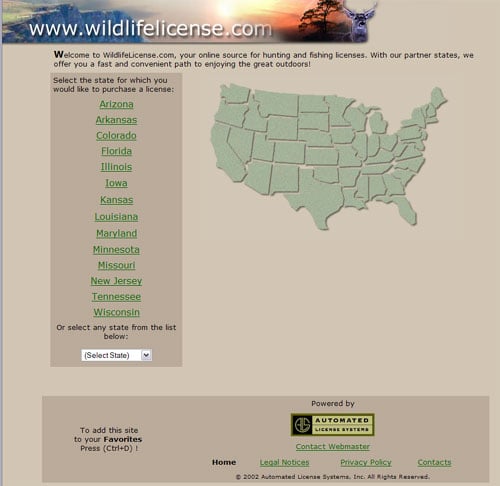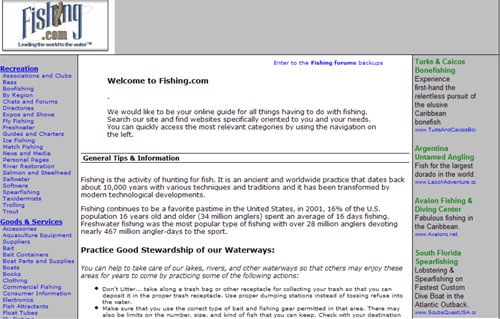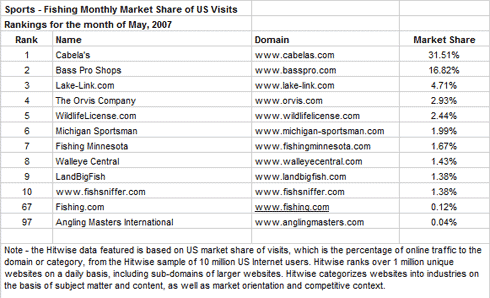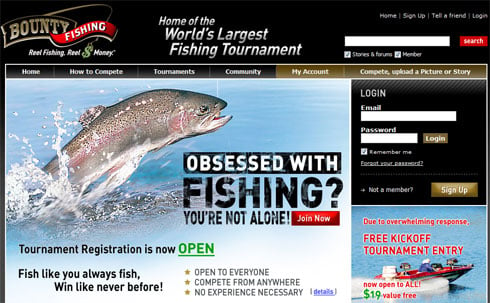
Web 2.0 Still Unheard of to Some Industries
For example, let's look at the fishing industry. According to FLW Outdoors, over 44 million Americans ages 7 and older fish. It ranks as the 5th most popular participation sport in the country (behind walking, camping, swimming, and exercising with equipment). 33% of anglers reported that they fish to relax, while 25% fish to spend time with friends and family.
The fishing industry is quite lucrative--anglers spend upwards of $35 billion a year on the sport for trips, equipment, licenses, dues, magazines, and tournaments. Thus, it's not surprising that there are millions of fishing sites on the web that sell equipment and offer information about fishing and fishing tournaments. However, you'd be hard-pressed to find among these results a site that approaches fishing in a Web 2.0, user-generated fashion.
Of the ten sites that hold the highest percentage of the fishing market share (based on U.S. visits, according to May 2007 Hitwise data - see below), four sites have virtually identical layouts (Cabela's, Bass Pro Shops, Lake-Link, and Orvis--all of the retail sites in the top 10), while the other six (wildlifelicense.com, michigan-sportsman.com, Outdoor Minnesota, Walleye Central, landbigfish.com, and the unfortunately titled Fish Sniffer Online) are inundated with flashing animated gifs, a late '90s color scheme, frames, and outdated copyrights.

Hard to believe, but this site is ranked 5th in monthly fishing market share (2.44%)
Even fishing.com, which appropriately ranks #2 in Google for the term "fishing" (behind Wikipedia, of course), looks as it if has been caught in an Internet Time Warp:

Now, I'm not saying that fishing retail sites need to adopt a Threadless or an Etsy look, nor do the fishing information sites all need to incorporate a lime green color palette, over-sized bubbly-looking icons, and star bursts (see this web 2.0 style guide for examples of what I'm talking about)--after all, fishing is a rugged outdoorsy activity, so these sites shouldn't alienate their audience just to win a design award. The point is that it's simply quite obvious that these sites (and others in various other industries) have an opportunity to catch up to the new, user-centric Internet and reap the rewards.
Think about it: how beneficial would it be for your site if you plotted user-submitted fishing spots on a Google map? Or if you allowed your users to rate various fishing equipment? Or if there were real-time updates of various fishing tournament standings? Web 2.0 is not just about design but user inclusion, and I don't see why non-tech industries shouldn't be able to dive into the pool and provide their existing users and customer base with an improved, quality experience while at the same time attracting new visitors with great features and clean, contemporary design.
I'll close by saying that not all is lost for the fishing industry. Bounty Fishing, an online fishing tournament and community site, is attempting to bring Web 2.0 to the online fishing sphere, and so far it's looking pretty good. The site sports a slick design, an innovative fishing tournament structure, a members section that allows you to upload and share photos, write posts, and befriend others, and an interactive "Bounty Map" that displays prize winners and trophy catches. It's too early to tell at this point whether Bounty Fishing will be a success, but I'm impressed with the effort that was taken to try and catch up to the whole Web 2.0/user-generated era of the Internet. I only hope that other industries will take notice and follow suit, both for the benefit of their users and to de-uglify the web. ;)
EDIT FROM RAND: Full Disclosure on this piece - Guillaume Bouchard, one of our long-time blog contributors, works at NVI Solutions, the company that created and is marketing the BountyFishing website. NVI is also a client of SEOmoz. I've also added the Hitwise data below:

The author's views are entirely their own (excluding the unlikely event of hypnosis) and may not always reflect the views of Moz.




Comments
Please keep your comments TAGFEE by following the community etiquette
Comments are closed. Got a burning question? Head to our Q&A section to start a new conversation.